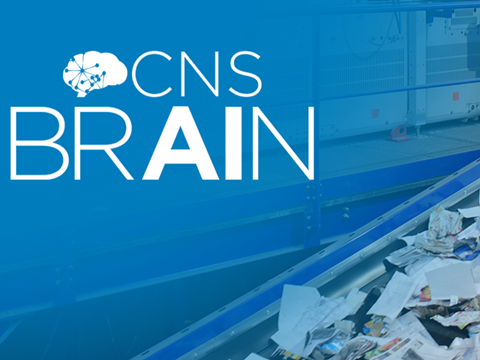
Pellenc ST has unveiled CNS BRAIN, which applies artificial intelligence, deep learning, and NIR/VIS technologies to paper streams in an effort to boost detection accuracy, improve sorting performance, and save energy.
According to the European Paper Recycling Council (EPRC), the recycling rate for all paper products – including packaging and graphic paper – rose to a record high of 79.3% in 2023. Furthermore, it is believed that the volume of brown cardboard entering sorting centres has increased, while tonnages of newspapers and magazines have declined.
Pellenc ST asserts that, in order to continue the upward trend and adapt to changing conditions, advanced and modular solutions are required.
The CNS BRAIN brings together deep learning and NIR/VIS technologies, utilizing optical sorters to undertake the ‘most complex’ separation of materials. Specific models have been designed to distinguish magazines from coated cardboard, for example, or white cardboard from office paper.
Furthermore, the short distance between the detection head and ejection bar is thought to achieve ‘extremely precise’ ejection and halve the loss of suitable products.
The solution is believed to be quick to implement, ready to use, and energy efficient; this is because it requires no additional hardware or storage server and, therefore, no further energy consumption. It can be utilized on new machines, or as an upgrade on Pellenc ST’s Mistral+ CONNECT and COMPACT+ ranges.
“Deep learning technology perfectly complements our already high-performance flow detection spectrometer,” says artificial intelligence manager Kévin Alazet. “It avoids the confusion that sometimes arises between white cardboard, small cardboard boxes and newspapers or magazines. The CNS BRAIN further enhances the sorting quality achieved by our machines.”
The technology has been qualified and validated at Pellenc ST’s long-standing customer sites and is anticipated for large-scale commercial deployment.
Interested parties are invited to download a brochure outlining the CNS BRAIN or watch a video demonstrating the sortation process.
Pellenc ST has also been involved in the HolyGrail 2.0 Initiative. In recent projects, it joined forces with FiliGrade Sustainable Watermarks to provide a prototype sorting module utilizing CurvCode watermarking technology on HDPE milk bottles; and contributed an add-on module, now industrially validated, to Hündgen Entsorgung’s material recovery facility for the advanced sortation of flexible packaging.
Meanwhile, TOMRA has also utilized deep learning in a new sorting technology designed to separate food-grade PET, PP, and HDPE from their non-food-grade equivalents. It is also said to use deinking and cleaning machinery to purify plastic and paper waste streams.
If you liked this story, you might also enjoy:
The ultimate guide to the Packaging and Packaging Waste Regulation in 2024
How are the top brands progressing on packaging sustainability?
Sustainable Innovation Report 2024: Current trends and future priorities
Everything you need to know about global plastic sustainability regulation












No comments yet